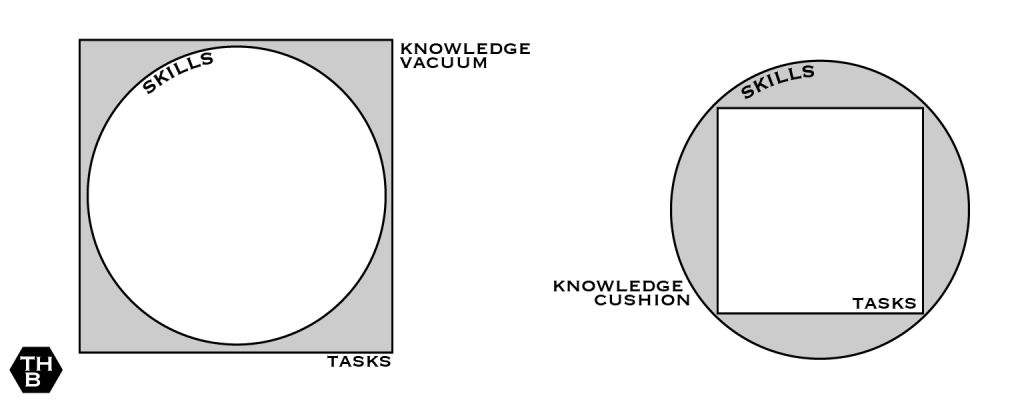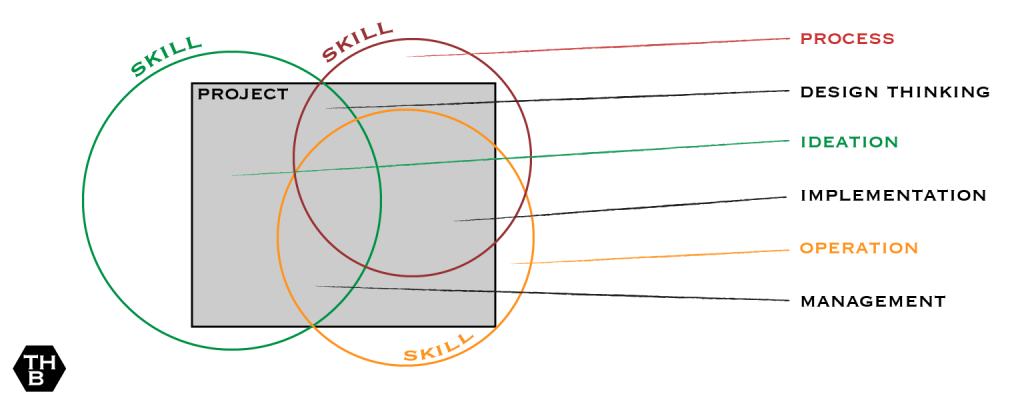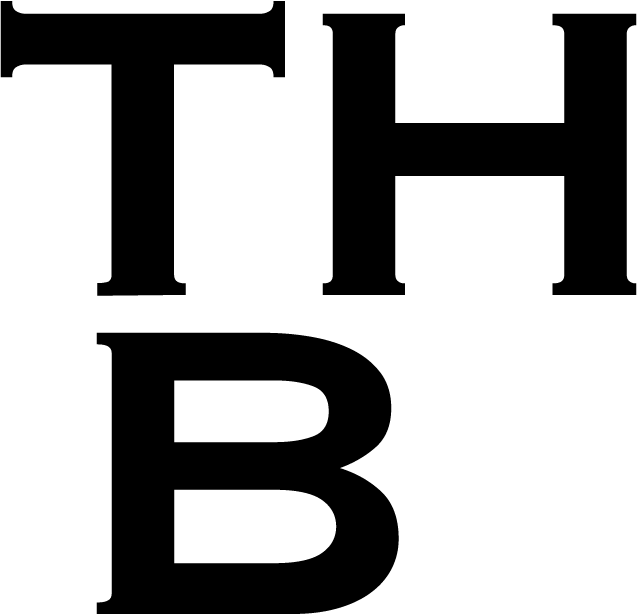
how to organize skills
The work we do at THB is often filled with rounds, circles and diagrams. It sometimes feel like being Charlie Chaplin squirming through all types of different cogwheels inside an immense machine. A few years ago, when I was working with people in the Swiss high-end watch industry, I have often imagined this same scene to take place inside a very thin Piaget movement with multiple complications.
“Venn” I was in High-School
I always had a different angle for the infamous scene and have somehow always been conceptually and visually more intrigued by the beauty of perfectly calibrated and collaborating cogwheels than the man with the moustache.
Every cog perfectly fits into another as with Venn Diagrams, where every circle sharply cuts another one, but only where needed; no communication necessary to get things done, while producing precise results…
What a beautiful way to visualise skills and collaboration, this week’s primary occupation.
Contemporary, four dimensional teams
For a great wrist watch, initial calibration and steady maintenance are crucial. One needs to treat it with respect, in order to obtain that mythical timepiece of timeless art. The same applies to teams of humans. Especially in today’s world, teams have to be highly 4D: diverse, dispersed, digital and dynamic.
Diversity in knowledge, views, and perspectives, as well as in age, gender, and race, can help teams be more creative and avoid groupthink (Haas and Mortensen, 2016).

Earlier this year I published two diagrams after Frances Frei (2020), visualising the creation of what I call “knowledge vacuums ( tasks that go beyond one’s skills)” or “knowledge cushions (one’s skill set is broader than demanded tasks)”. High-performing 4-D teams include members with a balance of skills. Every individual doesn’t have to possess superlative technical and social skills, but the team overall needs a healthy dose of both (ibid). Whereas no knowledge vacuums should be present for single tutors or managers teaching or directing a specific subject, it is fully ok to have team members with possible gaps, if they are filled with other members’ skill sets.

An expensive wristwatch is just showing time
We help our clients on the constitution of hybrid teams. We often start thinking of teams in Venn diagrams, where each needed skill becomes a circle creating possible intersections. All circles or intersections (skills) need to fully cover a square (the project / task). The main juxtaposition of multiple skills would therefore represent the needed real value of the team. In order to be effective, efficient and successful by the end of a project this main focus must be fully aligned with the center of the square (the project priority). Once the Venn-Project-Map is finalised it is much clearer and easier to find perfectly matching team members for each stage of the project. Projects or tasks are like cogwheels, they are in motion and never fully stable.
Let’s not work like broken wristwatches. Although they may be beautiful, shiny golden and expensive, they show the correct time just twice a day. More sadly, Chaplin could not squirm around in it.
References:
Frei, F., Morriss, A., Unleashed: The Unapologetic Leader’s Guide to Empowering Everyone Around You, (2020), Harvard Business Review Press.
Haas, M., Mortensen, M., The Secrets of Great Teamwork, (June 2016), Harvard Business Review


